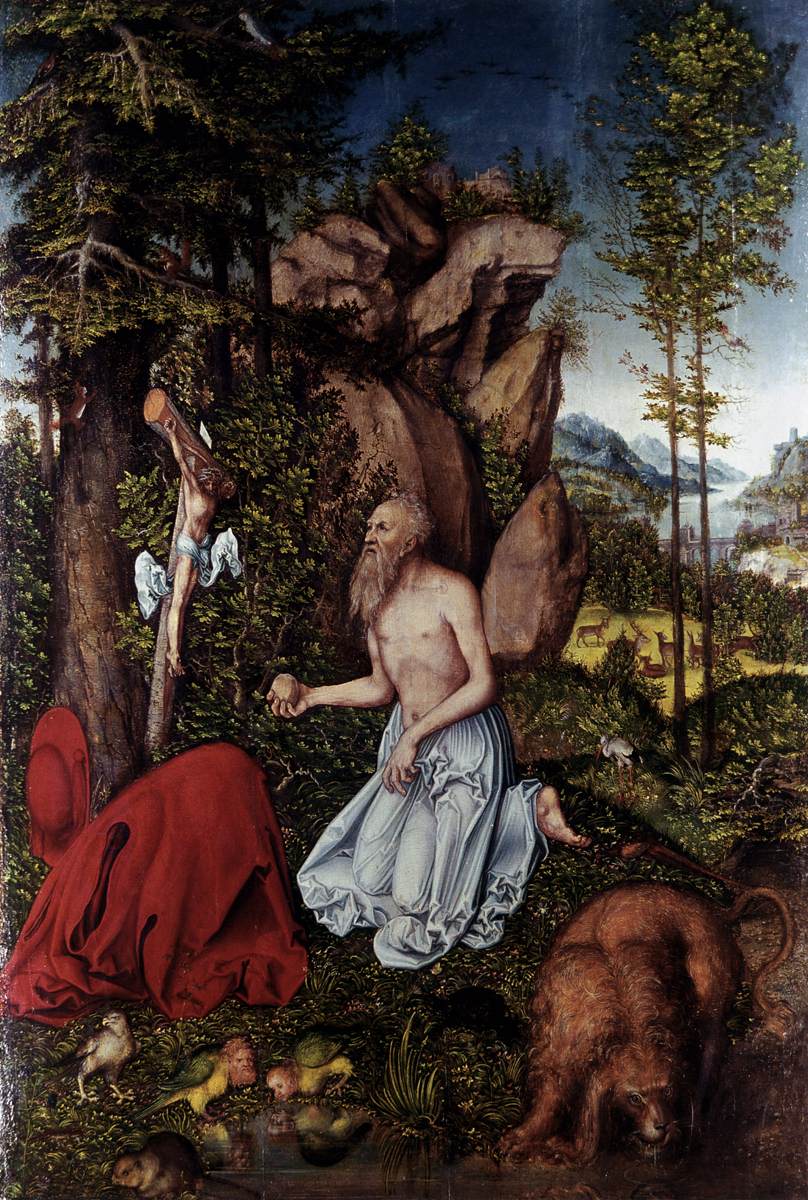Description
The painting St Jerome in the Desert by artist Lucas Cranach the Elder is a German Renaissance masterpiece that has captivated art lovers for centuries. Originally sized at 90 x 67 cm, this painting is a depiction of the Christian saint Jerome in the desert, which has become a popular subject in Western art.
Cranach's artistic style is evident in the work, with his distinctive use of clean lines and sharp contours defining figures and objects. The composition is impressive, with Jerome at the center of the painting, surrounded by a desolate and rocky landscape. The figure of the saint is depicted with great detail and realism, with his lean, muscular body, and his long, wavy beard and hair.
Color is another interesting aspect of this work, with a limited palette that focuses on earthy and reddish tones. Sunlight filtering through the clouds creates soft shadows and warm tones on the desert rock and sand. Cranach also uses color to emphasize the figure of the saint, with his red robes and pale, glowing skin.
The history of the painting is equally fascinating, as it is believed to have been created in the 1520s and was part of the Swedish royal family's art collection for many years. Today, it is in the National Museum in Stockholm, where it remains one of the most valued works in the collection.
In addition to its aesthetic beauty, the painting also has a deep symbolic meaning. Jerome is a saint known for his austerity and his dedication to the ascetic life in the desert, and his figure in the painting represents man's struggle against temptation and sin. This message is conveyed through the detailed representation of the objects in the painting, such as the skull and the cross, which symbolize death and redemption.
In short, Lucas Cranach the Elder's painting St Jerome in the Desert is an impressive work of art that combines masterful technique with profound symbolism. Its distinctive artistic style, impressive composition, limited color and symbolic meaning make it a masterpiece of the German Renaissance and one of the most valued works in the National Museum in Stockholm.

